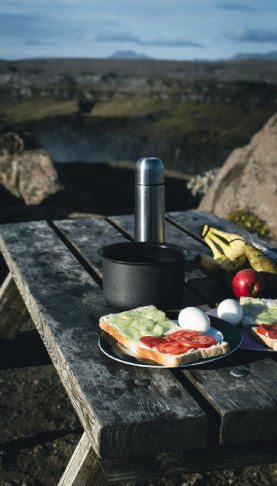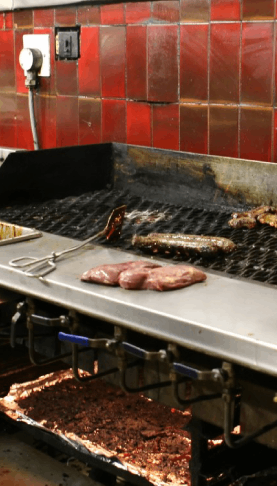Yes. Restaurant kitchens in Arvada often need excavation for plumbing. New builds, remodels, and fixes for failed drains or undersized lines all point to the same thing: you dig to reach the pipes. If you run a kitchen, you care because an underground issue turns into a closed line, canceled covers, and a late-night scramble. If you want a quick local starting point, here is plumbing excavation Arvada co. I will explain when it is needed, how long it can take, and what you can do to avoid digging twice.
Why a cooking site should care about excavation
It is not glamorous. It is not a new menu item. Still, it shapes service. Drainage, hot water delivery, and grease control decide whether your line keeps moving or stalls. You can have the best mise en place and still lose a night to a backed-up trench drain. I have seen a brunch rush slide into a mop bucket nightmare because a floor sink failed and everything bubbled back up. Maybe that is dramatic, but it is real.
When underground plumbing fails in a restaurant, the impact is fast and public. You risk lost revenue, health code violations, and team burnout from emergency cleanups.
And for readers who just love restaurants, this is the hidden layer that lets your favorite spot deliver hot plates on time. No one posts photos of a new grease interceptor pad, yet it is what makes that fried chicken crisp and legal.
What plumbing excavation means in a restaurant setting
Excavation is the work of exposing buried pipe or installing new pipe below grade. In a kitchen, that can be under the slab, outside in the parking lot, or both. The goal might be a repair, a replacement, or a new line for a new piece of equipment.
Common kitchen systems that lead to digging
- Under-slab sanitary drains that carry waste from floor sinks and trench drains
- Grease interceptor connections and replacements
- Water service upsizing for dish machines or higher volume
- Sewer lateral repair from the building to the city main
- New floor drains or floor sinks for an expanded cookline
Some jobs are small. A short trench inside to catch a new floor sink. Others are big. Full sewer lateral replacement to the main in the street with traffic control. The kitchen only sees the result. If you are a manager or an owner, you want to predict both.
Signs you may need excavation
Not every clog means a backhoe. Many issues resolve with drain cleaning or hydro jetting. Still, some patterns point to a buried problem. Here are the ones I pay attention to.
- Repeated backups on the same line within weeks
- Standing water across trench drains while other drains are fine
- Sewer gas smell that returns after cleaning
- Grease interceptor overflows or frequent alarms
- Camera inspection shows bellies, breaks, or roots
- Floor tiles heaving or slab cracks near wet areas
If a line fails soon after jetting, and a camera shows a low spot or crack, you are buying time with cleaning. Excavation fixes the cause.
There is a judgment call here. I think people wait too long because digging feels hard. Sometimes patience is smart. Sometimes it is false savings. A midnight emergency call during a packed service costs more than a planned fix on a Monday morning.
How excavation projects work in Arvada
Local process matters. In Arvada, that means permits, utility locates, inspection scheduling, and code checks. It is not just a shovel and a patch. The city and county want the work documented. The upside is safety and a result that lasts longer.
Permits and inspections
- Permit before digging. Your contractor handles this.
- Call 811 for utility locate. You do not want a surprise gas line.
- Rough inspection of the new pipe before backfill.
- Final inspection after backfill and surface restoration.
Inside work also needs dust control and often a simple site safety plan. If the work crosses a public sidewalk or street, you get traffic control. That adds planning and time. Not fun, but safer.
Inside slab work vs outside work
Inside, the crew sawcuts the slab, removes concrete, excavates by hand or with a small machine, repairs or replaces pipe, compacts soil, and repours concrete. Expect curing time. Outside, you often see a trench, shoring, and then surface repair like asphalt or concrete.
Inside slab work affects stations and routes. Plan where you will stage food, where you will put the dish racks, and how you will keep dust out of prep.
Trenchless or open trench
Trenchless methods like pipe bursting or lining can help with sewer laterals outside. They reduce surface cuts and speed up restoration. For under-slab restaurant drains, open trench is common because of grade corrections, bellies, and branch lines. You cannot line a line that lacks slope. It is tempting to want a no-dig fix. Sometimes that is right. Many times, you need to expose the pipe and rebuild slope.
Grease interceptors and why they drive excavation
Cooking fat and solids create sludge. The grease trap or interceptor catches it before it hits the city main. When you add a fryer bank, a combi oven with drip, or a high volume dish machine, you may outgrow your current interceptor or the lines feeding it. That is where digging shows up.
Typical needs that trigger work
- Upsizing a small under-sink trap to an outdoor interceptor
- Replacing a failed or corroded interceptor
- Relocating lines to meet current code or health requirements
- Adding a separate solids interceptor for prep sinks
Sizing varies by menu and fixture count. I have seen fast casual spots run fine on a 750-gallon unit and steakhouses need 1,250 gallons or more. Please verify local rules. The key is not just the tank size. It is the lines to and from it. If those lines are undersized or flat, you will see slow drains no matter how big your tank is.
Soil, frost, and local conditions in Arvada
Burial depth and soil type change scope. Arvada sits along the Front Range. You will find areas with clay that swells when wet. You also see a frost line that pushes burial depth for water service. The mix means careful compaction. Poor backfill leads to slab settlement or a dip in the parking lot where water pools.
Winter work is doable. It just needs planning for heaters, curing blankets, and safe access. Summer heat has its own issues with dust and fumes. Either way, pick dates that do not collide with a festival weekend or a chef tasting that pulls your team thin. Maybe that sounds obvious. Many people still miss it.
Timeline and kitchen impact
Every site is different, but you can map a typical flow. Here is a rough guide I trust for planning. Feel free to nudge the durations. I would rather you pad time than promise the moon.
| Phase | Typical Duration | Kitchen Impact |
|---|---|---|
| Site visit and camera scope | 1 to 2 hours | Minimal, schedule before prep |
| Estimate and permit | 2 to 7 days | No impact if planned early |
| Utility locate | 2 to 3 business days | None inside, light outside |
| Sawcut and demo inside slab | 0.5 to 1 day | High dust and noise, schedule off-hours |
| Excavation and pipe work | 1 to 3 days | Medium to high, prep moves to temp stations |
| Inspection | Same day | Short pause, then backfill |
| Backfill and compaction | 0.5 day | Moderate, limited access |
| Concrete pour and cure | 1 to 3 days | Walkable on schedule, full load later |
| Surface restoration outside | 1 to 2 days | Parking or patio impact |
For a small under-slab repair, you might finish in two days if the crew starts early and the inspector slots you in. Bigger lateral work goes longer. The biggest factor is access. Tight kitchens slow demo and haul-out, and that is fine. Better careful than fast with a broken freezer line.
Cost factors you can control
Costs move with depth, length, access, and surface type. You cannot change everything, but you can shape some of it by planning. Here is a simple view.
| Cost Driver | Lower Cost Scenario | Higher Cost Scenario |
|---|---|---|
| Depth of pipe | 3 to 4 feet | 8 feet or deeper with shoring |
| Length of repair | Short spot fix 5 to 10 feet | Full lateral 40 to 80 feet |
| Surface restoration | Basic concrete patch | Stamped concrete, tile, or asphalt lane |
| Access | Open area, easy haul-out | Busy kitchen, tight doors, stairs |
| Method | Open trench inside, simple | Trenchless plus pits and pits restoration |
Ballpark ranges help planning. Small indoor repairs can land in the low thousands. Full sewer lateral replacements can go into the tens of thousands, especially with street work or traffic control. Ask for a clear scope and a fixed price with allowances where needed. Not everything can be perfect. Surprises under a slab happen. But you should know the plan for each if and then.
How to keep service going during excavation
Here is the part most operators care about. How do we work while crews cut concrete and lay pipe. I like a three-part approach: phase, isolate, and communicate.
Phase the work
- Do sawcut and heavy demo after close or before opening
- Run the trench in sections so you always have a path
- Sequence lines so a prep sink remains active
Isolate the mess
- Tape and zip-wall the zone to keep flour and dust apart
- Use negative air or simple fans with filters
- Lay clean walk mats to stop grit from tracking
Communicate with the team
- Share a daily schedule with the chef, GM, and dish lead
- Move prep to morning if the crew needs evening access
- Mark a temp hand sink and sanitizer setup
If a sink or drain is out for even an hour, set a clear backup plan. Where will staff wash hands, where will they dump, and who checks that plan during rush.
Some places rent a temp dish station or set a bus tub rotation that meets health rules. It is not perfect. It works in a pinch.
Preventative steps that can reduce future digging
You cannot avoid every dig. You can reduce them. The big levers are cleaning, training, and documentation.
Cleaning routine
- Schedule hydro jetting on main kitchen lines on a set cadence
- Use camera scoping yearly to catch bellies or roots early
- Pump the grease interceptor on time and log it
For many kitchens, quarterly jetting on the main run keeps things smooth. Busy fry programs may need more. If you see frequent gray water slowdowns, change the cadence. Do not wait for a flood.
Staff habits
- Scrape plates dry into trash before the dish pit
- Use sink strainers and clean them between turns
- Never pour fryer oil into sinks, even a little
It sounds simple. It is also where most problems start. New hires need a 3-minute talk on what goes where. You will save money with that alone.
Documentation
- Keep as-built drawings of underground lines
- Mark cleanouts and access caps on a simple floor plan
- Record past repairs with photos and depths
When a crew shows up at 6 am and knows where to core, you lose less time and less floor. This helps in Arvada or anywhere.
When a remodel means new drains
Expanding a cookline or adding a bar sink often triggers new trenches. Plan the route now, before you buy equipment. Think in zones.
- Hot line with trench drains that shed fast
- Prep with floor sinks and air gaps for food safety
- Dish pit with proper slope back to the interceptor
Keep long runs straight. Fewer turns means fewer clogs. Give every line a cleanout you can reach without moving a lowboy. Future you will say thanks.
Concrete and curing in an active kitchen
Pouring concrete inside a restaurant has a rhythm. You want the slab to cure enough for foot traffic before you load it with carts or racks. Many mixes allow walk-on within a day, then full load later. Ask for a finish that matches your floor plan. If you plan to tile or coat later, let that into the schedule.
Use clear signs. I have seen a line cook step into green mud during a busy prep day. It set the job back hours. Not the cook’s fault. The tape was not clear and no one said anything during lineup.
Trade-offs with trenchless methods for restaurants
People ask if they can line every pipe and skip the mess. Lining can save time for a lateral to the street. It does not fix flat slope or a belly inside the building. Pipe bursting needs access pits. Both can be great when the path is under a patio or landscape you want to save. Inside a kitchen, open trench gives you grade correction and new branch lines the right way.
Tools and tech that help the kitchen side
- Acoustic monitors or simple stick tests on trench drains to check flow weekly
- Thermal cameras to spot hidden wet spots or leaks before the slab stains
- Labeling cleanouts with bright tags at eye level
None of this is fancy. It is steady. You will catch small problems early, which means lighter digs or no dig at all.
Coordination with inspectors and health rules
Your plumbing inspection checks pipe and slope. Health inspectors care about safe operation during the project. Keep hand sinks active, protect food from dust, and store chemicals away from the work. Share the plan with both. Most inspectors support a well-run fix. They want you open and compliant.
How water heaters tie into excavation decisions
Large dish machines and prep need steady hot water. If you upgrade the heater or add a second unit, you may need new supply lines or a larger gas line. While the floor is open for drains, think about running new conduit or water lines. It saves a future cut. Some kitchens in Arvada pair water heater repair or replacement with drain work for this reason. One visit, fewer closures.
A simple playbook for owners and chefs
Here is a short plan I wish every kitchen used. It is not perfect, and maybe you adjust it, but it keeps you from fire drills.
- Get a camera scope of your main kitchen drain once a year
- Keep a basic map of underground lines with photos
- Schedule routine jetting in slow weeks
- Train dish and prep on scraping and strainers
- Pick backup hand sink and dump plan before any work starts
- Ask for a clear scope, schedule, and price with allowances
Plan excavation like a menu change. You decide the steps, shop the vendors, set the timing, and prep your team. That mindset lowers stress and cost.
Mini case story
A mid-size Arvada bistro had repeat drain backups on weekends. Jetting helped, then clogs came back. Camera found a belly under the expo line. The owner wanted to wait until winter. After a bad Saturday, they moved ahead on a Monday. Crew cut a 15-foot trench, replaced pipe with proper slope, and patched by Tuesday evening. They did a light prep day on Wednesday, ran dinner smooth. They kept up quarterly jetting after that and stayed clear for a year. Not magic. Just fix the cause and hold a cleaning routine.
Questions to ask your contractor
- Where exactly is the failed section, and what is the depth
- Can you show the camera footage and mark the floor
- What is the plan to protect food and staff routes
- When will water and drains be out of service, and for how long
- What is the compaction method and concrete cure time
- Who handles permits, inspections, and 811
- What surprises have you seen in kitchens like ours, and how do you handle them
Push for specifics. Vague plans create long days and short tempers.
Common missteps and how to avoid them
- Waiting for a busy holiday push before fixing a known failure
- Letting crews cut without a dust and debris plan
- Skipping a camera after jetting to confirm the line is truly clear
- Pouring equipment back on green concrete without load timing
- Ignoring a slow trench drain because the others look fine
I am not against taking a beat before digging. I just think when a pattern is clear, move. Kitchens run on rhythm. Repeated disruptions hit morale and bottom line.
How this all connects to the food on the plate
Plumbing is the backbone of cook flow. Fast drains keep floors safe. Reliable hot water keeps dishware spotless, which helps plating and guest experience. Grease control keeps air cleaner and hood filters from saturating too fast. It is quiet work that supports the loud work.
If you love restaurants, this is part of how your go-to place stays open and consistent. If you run one, it is one more system to manage like inventory or staff training.
What about temporary closures
Sometimes you close for a day and slam the work in. That can be smart if you are known for dinner and not lunch. Prep heavy before, then pause. Post the plan on social and your site with a real tone. People are kinder when you explain. Reopen with a small special and the team fresh. I know, it is not a marketing blog, but it helps.
Quick reference: when to call, when to wait
- Call now if backups happen twice in a month on the same run
- Call now if a camera shows a cracked or flat section
- Wait and clean if a one-off clog clears and the line looks good
- Plan a project if you are adding high-grease menu items or a bigger fryer bank
You will still have edge cases. Talk them through with your operator brain, not just the budget brain. A planned dig in shoulder season beats a headline on a Friday night.
FAQ
Can hydro jetting replace excavation?
Jetting clears soft buildup like grease. It does not fix a broken pipe or a low spot. Use jetting to maintain lines and as a first step. If clogs return fast or the camera shows damage, plan the dig.
How long do under-slab repairs last?
With correct slope, solid bedding, and proper compaction, you can expect many years of service. The weak link is often misuse upstairs, not the new pipe.
Do I need to shut down the whole kitchen?
Not always. With phasing and temporary setups, many kitchens run limited service. Some choose a short closure to go faster. Weigh lost sales against crew time and risk.
What is the best time of year to schedule excavation in Arvada?
The best time is your slowest time. Weather matters a bit, but crews work year-round. Look at your sales history and pick windows with lower covers.
How do I keep inspectors happy during work?
Show a simple plan. Keep food covered, maintain handwashing, control dust, and mark safe routes. Communicate schedule changes. Most inspectors want you open and safe.
Will trenchless save me money?
Sometimes. For outside laterals with minimal slope issues, lining or bursting can save surface repair costs and time. Inside kitchens with grade problems, open trench is usually the right call.
What about smells during work?
Ask the crew to cap open pipes and use negative air. Short-term odors can happen during demo, but they should be managed and brief.
How do I plan around service hours?
Book heavy work before prep or after close. Run noisy or dusty tasks in the smallest windows. Share a daily plan with the team and stick to it as much as possible.
What should I budget?
Costs vary by depth, length, access, and surface. Small fixes land low. Full laterals land high. Ask for a clear scope, photos, and a fixed quote with known variables called out. It is not perfect, but it is honest.
Can I combine this with other upgrades?
Yes. If you open the floor, consider adding cleanouts, upsizing a section, or running conduit for future gear. One cut is better than two.













